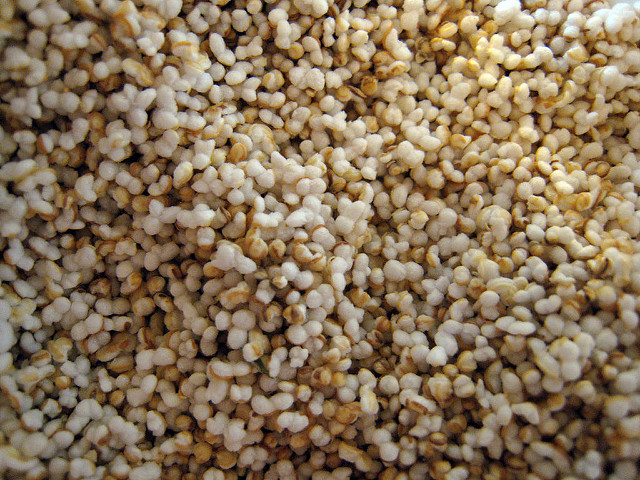
Popped amaranth seeds can be mixed with chopped veggies and tamarind chutney for a healthy chaat-like snack. Image source: John Lambert Pearson/Flickr
Kale and quinoa have been hogging the limelight as far as superfoods go, for quite some time now. But amaranth has been around for several millenia and was first cultivated by Aztecs, who revered the grains and offered it to the Gods. The tiny grains share a few similarities with quinoa in terms of nutritional content, but are impressive on their own. In India, it is popularly known as rajgira and is usually relegated as vrat ka khaana since it isn’t really a grain but a seed. But you really should include these tiny seeds in your diet, and not reserve them for festivities.
Since it is a seed, amaranth is completely devoid of gluten, making it an ideal replacement for those who are intolerant to gluten or want to cut out gluten from their diet. Amaranth flour can be used to add body to soups, gravies and curries.
The fibre content in the grains is also noteworthy, especially considering their tiny size. These seeds have a nutty, slightly sweet taste and can be popped like corn, making them a wonderful snack to munch on, especially if you’re watching your weight or trying to eat healthy.
Watch how to pop amaranth:
Amaranth is rich in essential oils and polyesterols that help keep cholesterol levels in check.
Recent studies conclude the presence of peptide antioxidants in amaranth that can help reduce inflammation and cell damage. Those suffering from chronic inflammatory disorders like arthritis and gout ought to include amaranth as a part of their regular meals.
An exceptional protein content is what makes these seeds a super food. When compared with other traditional grains, amaranth has a higher content of protein (approximately 26 grams per cup), making it an excellent source of plant-based protein for gym rats, vegetarians and vegans alike.
Watch how to include amaranth in your breakfast cereal:
Unlike most grains, amaranth contains lysine, an amino acid that’s essential for the smooth functioning of a host of body functions.
Iron, magnesium, potassium, phosphprus and vitamin C are also present in the seeds which help with keep the cardiovascular system healthy, boost immunity, increase energy levels and regulate mineral overall absorption in the body.
The leaves too contain several nutritive benefits, especially calcium(essential for bone development, effective nutrition absorption), which very few leafy greens can promise.
Watch how to cook amaranth leaves:









